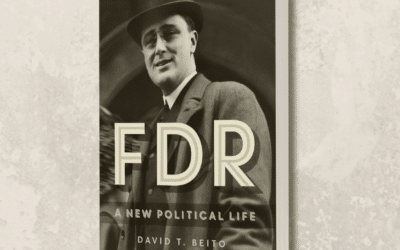In the 2024 general election, several states and cities across the country put forth initiatives aimed at adopting ranked-choice voting (RCV) and nonpartisan primaries. These measures were promoted as essential steps in reducing political polarization, creating more representative elections, and empowering independent and moderate voices. However, results showed a significant resistance to change, as most RCV initiatives failed at the statewide level, with the only notable success coming from Washington DC, which passed both open primaries and RCV.
The outcome reveals substantial challenges in advancing election reform, despite growing public dissatisfaction with the current two-party political system. This article examines what happened, explores the concept of ranked choice voting, and considers why it remains a promising tool for disrupting the duopoly of American politics.
Ranked-choice voting allows voters to rank candidates by preference rather than selecting only one. In an RCV election, if no candidate achieves a majority of first-choice votes, the candidate with the fewest votes is eliminated. Voters who selected the eliminated candidate as their first choice then have their votes transferred to their second choice. This process continues until a candidate secures a majority, making RCV a more comprehensive reflection of voter preferences.
Statewide RCV measures were voted down in Arizona, Colorado, Idaho, Montana, Nevada, Oregon, and South Dakota. Each of those states had proposed initiatives that would either replace party primaries with nonpartisan contests, implement RCV for general elections, or both. Advocates for these reforms argued that they would curb the extreme partisanship of current U.S. politics by encouraging candidates to appeal to a broader range of voters. Despite these efforts, the measures faced fierce opposition from both major political parties, who argued that these reforms would confuse voters and weaken party control over the candidate selection process.
The pushback was especially intense in highly polarized states, where suspicion of any changes to the voting system ran high. As Nick Troiano, executive director of Unite America, explained, “Any change to election rules in this highly polarized time will be met with skepticism by voters who will more often than not default to ‘no.’”
Even in Alaska, which had already implemented both RCV and nonpartisan primaries, a measure to repeal these reforms was on the ballot, and it narrowly passed—this following blowback from the 2022 special election that saw RCV used for the first time in a congressional race, and in which Alaska Republicans failed to rank (that is, select) both Republicans Sarah Palin and Nick Begich, leading to the surprise election of Democrat Mary Peltola.
Naturally, instead of trusting the affected voters to have learned from their past mistake, or tweaking the new system to avoid future such wrinkles (eliminating the instant runoff and using the sequential loser model of the Coombs’ method, to take just one example among many), RCV was summarily eliminated.
Despite these setbacks, there were some successes. Washington DC passed a measure to implement RCV and open primaries, with strong support from voters across all city wards. Local level efforts in cities like Oak Park, Illinois, and Bloomington, Minnesota also found success, suggesting that grassroots efforts and community-based campaigning can make a difference in promoting much needed electoral reform.
The American political landscape is currently dominated by two major parties, which control primaries and benefit from a system that often excludes independents and moderates. Ranked-choice voting has the potential to disrupt this duopoly by creating a more level playing field for independent candidates and those from smaller parties.
The current primary system is a significant factor in political polarization. In closed primaries, only registered members of a particular party can vote, meaning that candidates often appeal to their party’s base rather than the general electorate. RCV, when combined with open, nonpartisan primaries, helps address this issue by including all candidates in a single primary, allowing all voters to participate, regardless of party affiliation. The top finishers advance to the general election, where RCV enables a broader, more representative choice.
For example, in a traditional election, voters who prefer independent or moderate candidates might avoid “wasting” their vote on someone unlikely to win, opting instead for one of the two main parties. RCV removes the need for “strategic voting,” as voters can list a preferred candidate as their first choice without sacrificing the chance to support a major-party candidate as a backup. This flexibility encourages a wider range of candidates, including independents and those with moderate views, which can lead to more constructive, solutions-oriented campaigning.
The failure of RCV initiatives in the 2024 election can be attributed to several factors. First, there was the strong and predictable resistance from the Democratic and Republican parties, which as per usual saw these measures as a threat to their control over the political system. Both parties raised concerns about voter confusion and argued that RCV would unfairly benefit the other side, fueling voter skepticism.
Additionally, some of the proposals were coupled with other far less desirable initiatives. For example, in Missouri, where fully 68% voted to prohibit RCV, they did so as part of a joint proposal to also prohibit non-citizens from voting.
There was also a lack of clarity and understanding among voters about what RCV entails and how it could benefit them. As Dorothy Wesley, a voter in Nevada, put it, “It just seemed to [pop up] all of a sudden. And it wasn’t clear.” This points to a need for more comprehensive messaging to voters about RCV and its benefits in reducing polarization and enhancing representation.
Despite the setbacks at the state level, the success of RCV initiatives at the city level suggests that change is possible with the right approach. Campaigners like Troiano emphasize the importance of refining the message and helping voters see the tangible benefits of RCV. Rather than framing RCV as an abstract reform, future efforts should focus on showing voters how it can lead to more representative governance, essentially moving toward something closer to a system of proportional representation sans all the additional hurdles such a move would entail.
RCV advocates are likely to concentrate on city-level initiatives and gradually build support in communities, with the hope that positive experiences will encourage statewide adoption. This bottom-up approach could prove effective in overcoming the deeply entrenched resistance from both parties and the public’s natural skepticism toward electoral reforms that have accompanied more top-down approaches.
In conclusion, while the 2024 election was a challenging year for ranked-choice voting initiatives, the movement’s persistence and the localized successes suggest a path forward. By educating voters, refining messaging, and demonstrating RCV’s effectiveness at the community level, supporters of election reform can continue to build momentum toward a more inclusive and representative voting system in America, dealing a severe blow to the existing duopoly in the process.
































